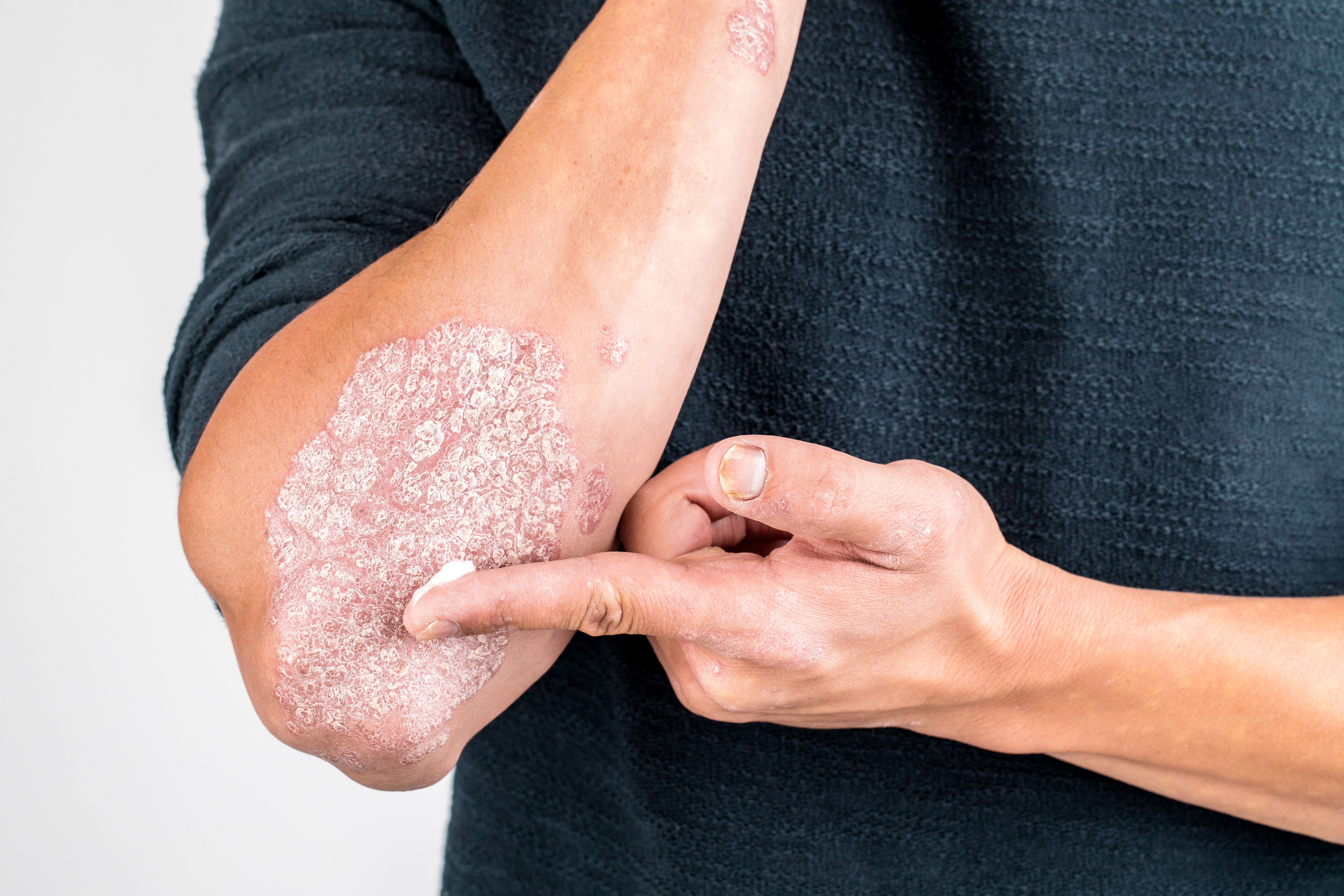- Case-Based Roundtable
- General Dermatology
- Eczema
- Chronic Hand Eczema
- Alopecia
- Aesthetics
- Vitiligo
- COVID-19
- Actinic Keratosis
- Precision Medicine and Biologics
- Rare Disease
- Wound Care
- Rosacea
- Psoriasis
- Psoriatic Arthritis
- Atopic Dermatitis
- Melasma
- NP and PA
- Skin Cancer
- Hidradenitis Suppurativa
- Drug Watch
- Pigmentary Disorders
- Acne
- Pediatric Dermatology
- Practice Management
- Prurigo Nodularis
- Buy-and-Bill
Article
A noteworthy margin of error in psoriasis?
Author(s):
Dermatologists need to be aware of margin of error and related issues that can affect the results of biosimilar clinical trials, a study shows.
Dermatologists need to be aware of margin of error and related issues that can affect the results of biosimilar clinical trials. Sample size, study population variability, study site geography, and clinical expertise can impact trial results.
The statistical margin used to define the maximum allowable difference between biosimilar and a reference agent for psoriasis may be “unacceptably wide” to some prescribing clinicians, authors of a recent meta-analysis have concluded.
The margin of error, sometimes referred to as the similarity margin, is decided upon by regulatory bodies and may be too imprecise depending on the clinician’s perspective, the authors wrote in a research letter published in the Journal of the American Academy of Dermatology.
For example, if a study’s margin of error is ±15% and the originator biological product has a PASI 75 response rate of 65%, a biosimilar with a PASI 75 of just 50% could be deemed equivalent, wrote authors who were led by Marilyn T. Wan, M.B.Ch.B., M.P.H., of the University of Pennsylvania Perelman School of Medicine in, Pennsylvania.
“One physician might consider these parameters sufficient and comfortably prescribe the biosimilar as a replacement for the originator; however, another clinician might require more conservative margins,” Dr. Wan and colleagues wrote.
This study was a a systematic review of statistical margins in comparative clinical trials of biosimilars. They considered trials published through Feb. 17, 2017, and sought data from unpublished or unidentified studies. The studies included adult patients with plaque psoriasis who were randomly assigned to receive a biosimilar or originator drug.
They narrowed the search to four clinical trials including 1,746 patients, which had margins of error ranging from ±14% to ±18%, the meta-analysis shows.
Another five clinical trials were excluded, according to the report, due to data that was insufficient and not obtainable through subsequent requests sent to corresponding authors.
“As biosimilar approvals accrue and their use increases, possibly delivering decreased healthcare costs and better patient access, practitioners require a deeper understanding of the design and conduct of clinical trials to better interpret the true likelihood of achieving the same clinical outcome regardless of drug choice,” the authors wrote.
Biosimilar study goals
Biosimilars are typically investigated in equivalence trials designed to show the drug is not too dif erent (ie, not superior or inferior) in comparison to the reference product.
Because biosimilars are intended to have no clinically meaningful differences in safety, purity, or potency versus the approved reference drug, understanding the margin of error is “critical” to determine if “potentially clinically important differences in efficacy were ruled out statistically by study design,” the authors wrote.
The quandary of the margin of error question is compounded by the issue of sample size. In a trial powered at 0.80 with a ±15% margin of error, 382 patients would be needed. However, with a narrower ±10% margin of error, an additional 476 patients would be needed.
These and other critical factors not well understood by the average dermatologist include study population variability, study site geography, and clinical expertise.
NEXT: The biosimilar trials
“One physician might consider these parameters sufficient and comfortably prescribe the biosimilar as a replacement for the originator; however, another clinician might require more conservative margins.”
- Marilyn T. Wan, MBChB, MPH, University of Pennsylvania Perelman School of Medicine
Dr. Wan and colleagues reported data for the four double-blind, randomized, controlled trials that compared biosimilars to reference agents.
In a trial of 350 patients randomized 1:1 to the biosimilar adalimumab-atto or adalimumab, the margin of error was ±15% and the study power was 0.90, authors said. The primary outcome was mean percent improvement in PASI from baseline to Week 16. The reported response rate in the trial was 86.6% for the biosimilar vs 88% for the reference drug.
Another trial looked at the biosimilar etanercept-szzs versus etanercept that included 531 patients, the margin of error was ±18% and the study power was 0.90. For the primary outcome of PASI 75 at Week 12, the response rate was 70.4% for the biosimilar and 71.6% for the originator drug.
The margin of error was also ±18% in a randomized study of CHS-0214 vs etanercept including 521 patients, but the study power was yet to be determined, authors of the meta-analysis said at the time of their report. The primary outcome was PASI 75 and the response rate was 64.5% and 62.3%, respectively, for CHS-0214 and etanercept.
The final randomized comparative trial, which had a margin of error of ±14% and a study power of 0.80, compared BCD-057 to adalimumab in 344 patients.5 The primary outcome is PASI 75 at 16 weeks and the response rate has not yet been determined, according to the meta-analysis report.
QUICK TAKES
- Dermatologists need to be aware of margin of error and related issues that can affect the results of biosimilar clinical trials.
- Sample size, study population variability, study site geography, and clinical expertise can impact the results of biosimilar trials.
- Margin of error, or similarity margin, is the maximum allowable difference between biosimilar and a reference agent on a particular treatment measure.
- The similarity margins used in recent psoriasis trials may be unacceptably imprecise for some prescribing clinicians.
DISCLOSURES:
The study’s authors reported research funding and other disclosures related to commercial entities including AbbVie, Inc, Amgen, Boehringer Ingelheim, Dermira, Eli Lilly and Company, Janssen Pharmaceutical, Novartis, Regeneron, and Sun Pharmaceutical Industries Ltd, among others. Full disclosures are listed in the Journal.
REFERENCES
- Wan MT, Strober BE, Wu JJ, et al. “How similar are the treatment responses to biosimilars in patients with psoriasis? A systematic review of statistical margins in comparative clinical trials,” JAAD. DOI:10.1016/j.jaad.2017.05.032.
- “Study to Compare Effi cacy and Safety of ABP 501 and Adalimumab (HUMIRA®) in Adults With Moderate to Severe Plaque Psoriasis,” ClinicalTrials.gov.
- “Study to Demonstrate Equivalent Effi cacy and to Compare Safety of Biosimilar Etanercept (GP2015) and Enbrel (EGALITY),” ClinicalTrials.gov
- “Comparison of CHS-0214 to Enbrel (Etanercept) in Patients With Chronic Plaque Psoriasis (PsO),” ClinicalTrials.gov.
- "Comparative Clinical Trial of Effi cacy and Safety of BCD-057 and Humira® in Patients With Moderate to Severe Plaque Psoriasis (CALYPSO),” ClinicalTrials.gov






